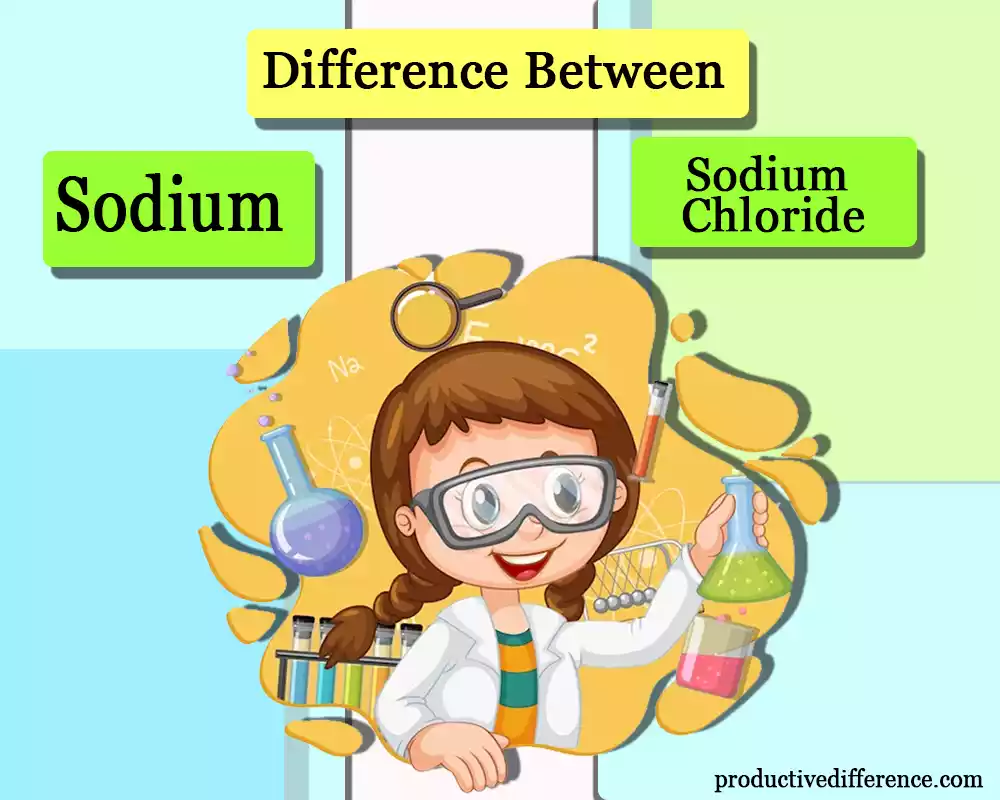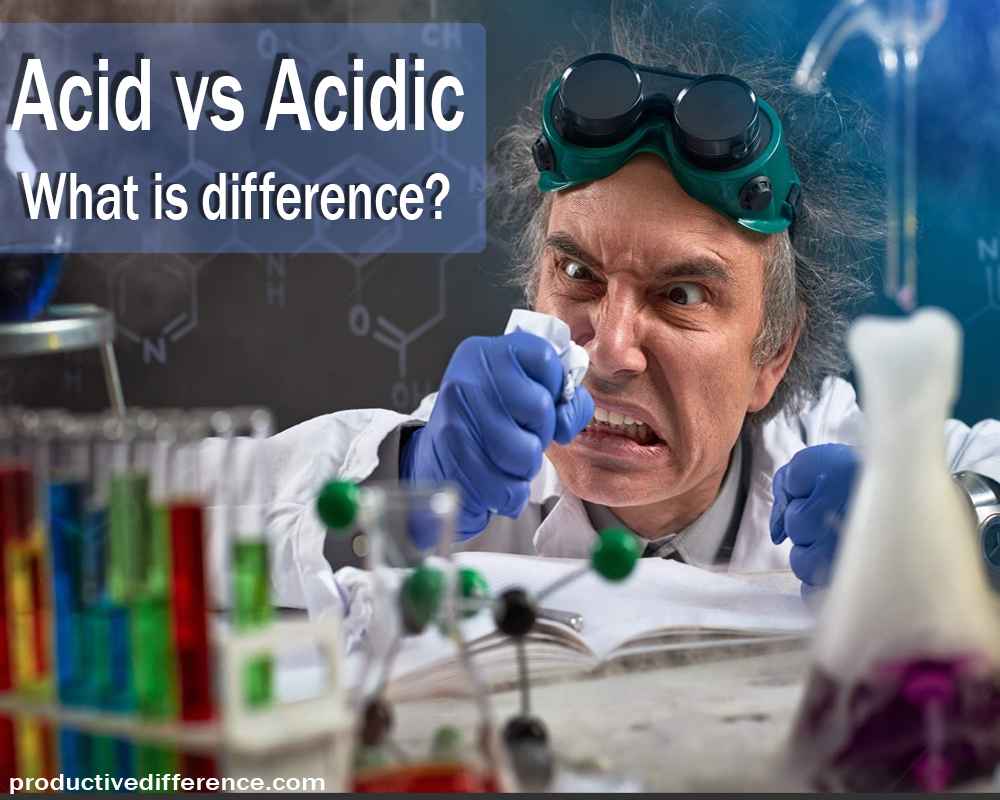Introduction to Weak Acids and Strong Acids
Weak acids and strong acids represent different levels of ionization when dissolved in water. A weak acid only partially ionizes, meaning it releases fewer hydrogen ions (H+) into the solution. On the other hand, a strong acid fully dissociates, releasing a high concentration of hydrogen ions.
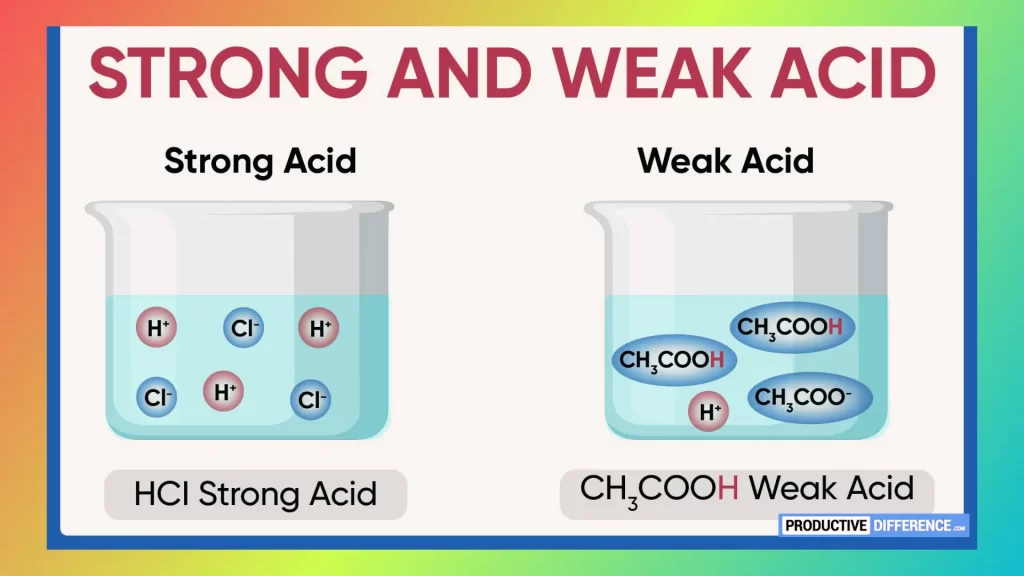
Acids are classified based on their ability to dissociate in water and release protons. Weak acids are substances that only partially dissociate in water, while strong acids dissociate completely. The strength of an acid is determined by its equilibrium constant, which indicates the extent of dissociation.
A weak acid is an acid that does not completely dissociate into ions when dissolved in water. It has a low concentration of hydronium ions in solution. Weak acids exhibit characteristics such as low electrical conductivity, limited corrosiveness, and a less sour taste compared to strong acids.
What are Acids?
Acids are a type of chemical substance that is essential in many chemical reactions and processes. They are characterized by their ability to donate protons (H+) when dissolved in water, leading to the formation of hydronium ions (H3O+). Acids have a typically sour taste and can cause a burning or stinging sensation on the skin or mucous tissues.
Both natural and synthesized acids are available. Citrus fruits, vinegar, and other plants and animals are natural sources of acid. Industrial operations create synthetic acids, which are utilized in a variety of applications such as manufacturing, medicines, food production, and research.
The strength of an acid refers to its ability to donate protons. Acids can be categorized as weak acids or strong acids based on their degree of dissociation in water. Weak acids only partially dissociate into ions when dissolved, while strong acids completely dissociate, releasing all their available protons.
Acids have several important properties and behaviors. They can conduct electricity when dissolved in water due to the movement of charged particles (ions). Acids also react with bases to form salts and water in a process known as neutralization. The concentration of hydronium ions in a solution determines its acidity, which is measured on the pH scale. Acidic solutions have a pH value below 7, with lower values indicating stronger acidity.
While acids are often associated with corrosiveness and potential hazards, not all acids are extremely dangerous. The strength and concentration of an acid, as well as proper handling and precautions, play a crucial role in determining its safety for various applications.
Do you know how many types of acids have?
There are several types of acids categorized based on their source, behavior, or composition.
Here are some common types of acids:
- Mineral Acids: Mineral acids can be defined as inorganic acids derived from mineral sources. These include hydrochloric (HCl), nitric (HNO3), and phosphoric acids (H3PO4). Mineral acids are widely used in various industrial processes and chemical reactions.
- Organic Acids: These include citric (C6H8O7) and formic (HCOOH) acids, as well as acetic (CH3COOH). Organic acids are commonly found in food, plants, and living organisms. They are used as flavor enhancers, preservatives, and in various pharmaceutical and chemical applications.
- Strong Acids: Strong acids are substances that dissolve completely in water, dispersing all hydrogen ions (H+). Strong acids include hydrochloric (HCl), nitric (HNO3), and perchloric (HClO4) acids.
- Weak Acids: Weak acids are acids that only partially ionize or dissociate in water. They release some of their hydrogen ions (H+) but retain a significant portion of undissociated acid molecules. Examples of weak acids include acetic acid (CH3COOH), carbonic acid (H2CO3), and phosphoric acid (H3PO4).
- Carboxylic Acids: Carboxylic acids are a type of organic acid characterized by the carboxyl functional group (-COOH). They include acetic acid (CH3COOH), formic acid (HCOOH), and benzoic acid (C6H5COOH). Carboxylic acids are widely used in the production of polymers, pharmaceuticals, and food products.
- Lewis Acids: Lewis acids are electron pair acceptors according to the Lewis acid-base theory. They can accept a pair of electrons from a Lewis base to form a covalent bond. Examples of Lewis acids include aluminum chloride (AlCl3), boron trifluoride (BF3), and iron(III) chloride (FeCl3).
These are just a few examples of the different types of acids. Acids play a vital role in various fields, including chemistry, biology, industry, and everyday life.
Definition of Weak Acids and Strong Acids
Definition of Weak Acids: A weak acid is a type of acid that only partially ionizes or dissociates in water. When a weak acid is dissolved in water, it releases some of its hydrogen ions (H+) but retains a significant portion of its acid molecules in an undissociated form. As a result, the concentration of hydronium ions (H3O+) in a solution of a weak acid is relatively low compared to strong acids.
Weak acids exhibit specific characteristics due to their partial dissociation. They have a milder acidity and a less pronounced sour taste compared to strong acids. Strong acids exhibit limited corrosiveness and lower electrical conductivity than weak acids, such as vinegar and citrus fruits containing citric acid, formic acid, and carbonic acid. Examples of weak acids are: acetic acid found in vinegar; citric acid from citrus fruit rinds; formic acid from gasoline engines and carbonic acid from carbonic gas tanks.
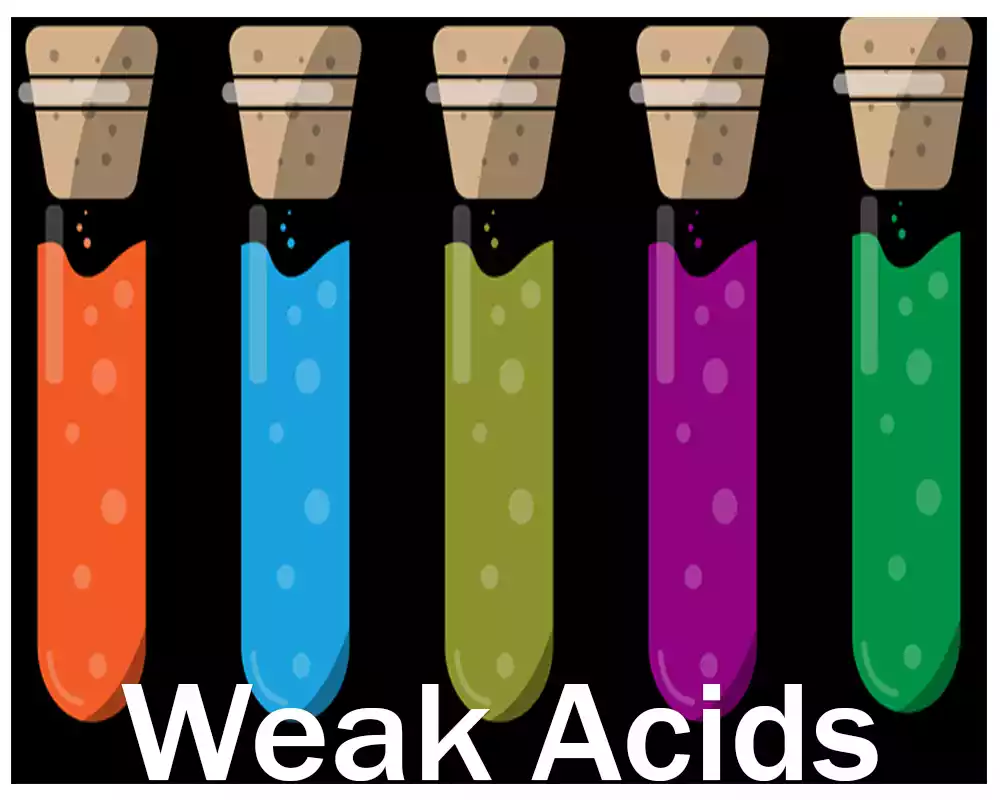
The extent of dissociation of a weak acid can be quantified by its acid dissociation constant (Ka), which indicates the equilibrium between the undissociated acid molecules and the dissociated ions in a solution. A lower value of Ka signifies a weaker acid with less complete dissociation. Understanding weak acids is essential in various fields, including chemistry, biology, and environmental science.
Definition of Strong Acids: A strong acid is a type of acid that completely ionizes or dissociates in water. When a strong acid is dissolved in water, it readily releases all of its hydrogen ions (H+) into the solution. As a result, the concentration of hydronium ions (H3O+) in a solution of a strong acid is high.
Strong acids exhibit distinct characteristics due to their complete dissociation. They have a strong acidity and a pronounced sour taste. Strong acids can also be extremely corrosive and exhibit high electrical conductivity in solution. Strong acids can include hydrochloric, sulfuric, nitric, or hydrobromic acids.
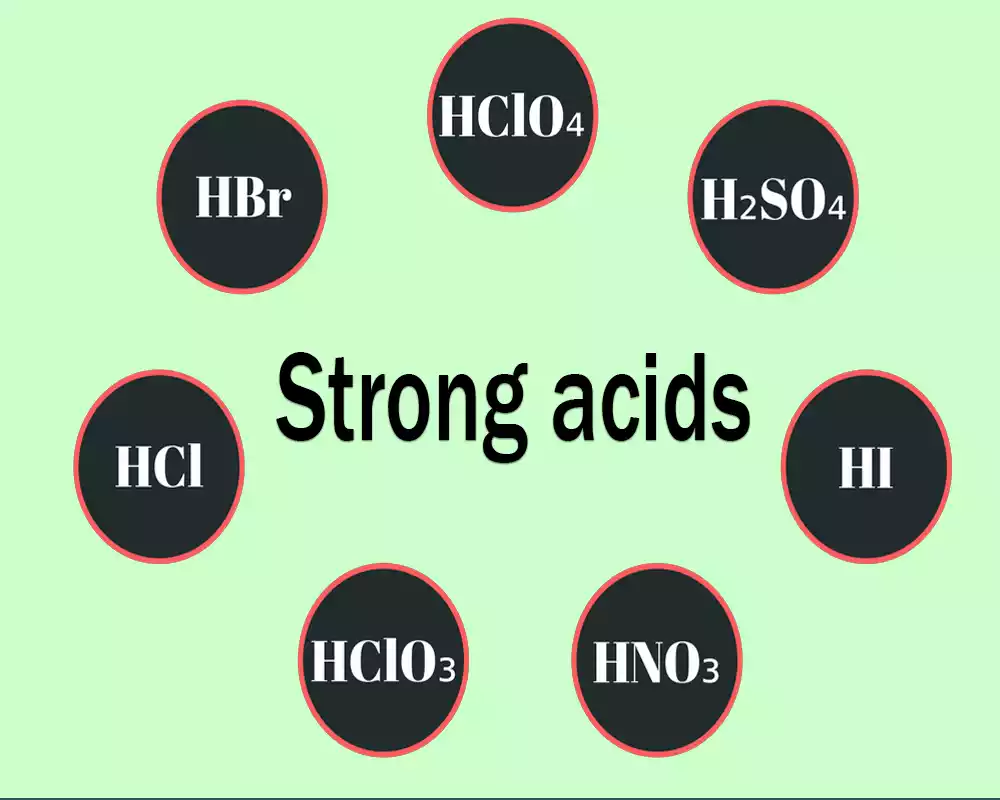
The complete dissociation of a strong acid in water means that it effectively donates all of its available protons, resulting in a high concentration of hydronium ions. This characteristic makes strong acids highly reactive and capable of producing significant changes in pH when added to a solution. Understanding strong acids is crucial in fields such as chemistry, industrial processes, and laboratory research.
Properties of Weak Acids and Strong Acids
Properties of Weak Acids:
- Partial Ionization: Weak acids only partially ionize or dissociate in water. They release some of their hydrogen ions (H+), but a significant portion of the acid molecules remains undissociated.
- Lower Conductivity: Due to their partial ionization, weak acids have lower electrical conductivity compared to strong acids. The lower concentration of ions restricts the flow of electric current through the solution.
- Milder Acidity: Weak acids exhibit a milder level of acidity compared to strong acids. This means they have a less pronounced sour taste and are generally less corrosive.
- Equilibrium and Ka: Weak acids exist in an equilibrium between the undissociated acid molecules and the dissociated ions in the solution. The acid dissociation constant (Ka) is a measure of the extent of ionization of a weak acid.
- pH: Solutions of weak acids have a pH value typically higher than solutions of strong acids. The pH is a measure of the acidity or alkalinity of a solution, with values below 7 indicating acidity.
Properties of Strong Acids:
- Complete Ionization: Strong acids completely ionize or dissociate in water. They readily release all of their hydrogen ions (H+), resulting in a high concentration of hydronium ions (H3O+).
- Higher Conductivity: Strong acids have higher electrical conductivity due to their complete ionization. The abundance of ions allows for better conductivity of electric current through the solution.
- Strong Acidity: Strong acids exhibit a strong level of acidity. They have a pronounced sour taste and are highly corrosive, capable of causing damage to living tissues and materials.
- No Equilibrium and Ka: Unlike weak acids, strong acids do not have an equilibrium between the undissociated molecules and dissociated ions. Their complete ionization means they have a very high acid dissociation constant (Ka).
- Lower pH: Solutions of strong acids have a pH value below 7, indicating a highly acidic nature. The lower the pH value, the stronger the acidity.
Understanding the properties of weak and strong acids is essential in various applications, including chemistry, biology, and industry, as it helps determine their behavior and reactivity in different contexts.
Let’s know the kinds of Weak Acids and Strong Acids
Types of Weak Acids:
- Acetic Acid: Acetic acid (CH3COOH) is a weak acid commonly found in vinegar and used in various applications, including food preservation, flavoring, and as a cleaning agent.
- Citric Acid: Citric acid (C6H8O7) is a weak acid naturally occurring in citrus fruits. It is widely used as a flavor enhancer, and preservative, and in the production of beverages, confectionery, and pharmaceuticals.
- Carbonic Acid: Carbonic acid (H2CO3) is a weak acid that forms when carbon dioxide dissolves in water. It plays a role in maintaining the pH balance in the bloodstream and is involved in the carbonation of beverages.
- Phosphoric Acid: Phosphoric acid (H3PO4) is a weak acid commonly used in the food and beverage industry, particularly in the production of soft drinks. It is also used as a rust remover and as a reagent in laboratory settings.
Types of Strong Acids:
- Hydrochloric Acid: Hydrochloric acid (HCl) is a strong acid commonly used in industrial processes, laboratory work, and as a stomach acid in the human digestive system.
- Sulfuric Acid: It is the strongest acid most commonly used. Numerous industrial uses are possible, such as the manufacture of dyes, batteries, fertilizers, and detergents.
- Nitric Acid: Nitric acid (HNO3) is a strong acid used in the production of fertilizers, explosives, and various chemical compounds. It is highly corrosive and plays a crucial role in several industrial processes.
- Hydrobromic Acid: It is used for organic synthesis and in particular in the manufacture of chemicals. Highly reactive and corrosive, it is a strong acid.
These are just a few examples of weak and strong acids. There are many other weak and strong acids with diverse properties and applications in various industries and scientific fields.
The key difference between Weak Acids and Strong Acids
The key difference between weak acids and strong acids lies in their degree of ionization or dissociation in water.
- Degree of Ionization: Weak acids only partially ionize or dissociate in water. They release some of their hydrogen ions (H+), but a significant portion of the acid molecules remains undissociated. On the other hand, strong acids completely ionize in water, releasing all of their hydrogen ions into the solution.
- The concentration of Ions: Due to their partial ionization, weak acids have a lower concentration of hydronium ions (H3O+) in the solution compared to strong acids. Strong acids, which fully ionize, have a higher concentration of hydronium ions.
- Electrical Conductivity: Weak acids exhibit lower electrical conductivity compared to strong acids. The lower concentration of ions resulting from partial ionization restricts the flow of electric current through the solution. Strong acids, with their higher concentration of ions, have higher electrical conductivity.
- Acidity Level: Weak acids have a milder level of acidity compared to strong acids. They exhibit a less pronounced sour taste and are generally less corrosive. Strong acids, with their complete ionization and higher concentration of hydrogen ions, display a strong level of acidity, characterized by a more intense sour taste and higher corrosiveness.
- pH Value: Solutions of weak acids have a pH value typically higher than solutions of strong acids. The pH scale measures the acidity or alkalinity of a solution, with values below 7 indicating acidity. Strong acids, with their higher concentration of hydrogen ions, result in lower pH values, indicating a stronger acidic nature.
Understanding this key difference is important as it helps distinguish the behavior and properties of weak and strong acids in various applications, such as chemical reactions, industrial processes, and biological systems.
Comparison table between Weak Acids and Strong Acids
| Characteristic | Weak Acid | Strong Acid |
|---|---|---|
| Degree of Ionization | Partial ionization | Complete ionization |
| Concentration of Ions | Lower concentration of hydronium ions (H3O+) | Higher concentration of hydronium ions (H3O+) |
| Electrical Conductivity | Lower electrical conductivity | Higher electrical conductivity |
| Acidity Level | Milder acidity | Stronger acidity |
| Corrosiveness | Less corrosive | More corrosive |
| Sour Taste | Less pronounced | More pronounced |
| pH Value | Typically higher than 7 (less acidic) | Typically lower than 7 (more acidic) |
| Examples | Acetic acid, carbonic acid, citric acid | Hydrochloric acid, sulfuric acid, nitric acid |
While weak acids only partially ionize and have a milder acidity, their behavior and properties can still have significant impacts in various applications. Conversely, strong acids with their complete ionization and higher acidity can be highly corrosive and reactive. Understanding these differences is crucial in chemistry, biology, and other scientific fields where acids play a vital role.
Importance of Weak Acids and Strong Acids in the medical field
Weak acids and strong acids play important roles in the medical field in various applications and treatments.
Here are some of their significance:
Weak Acids:
- Pharmaceutical Formulations: Weak acids are commonly used in the formulation of medications. The pH-dependent solubility of weak acids allows for controlled drug release in the body, enhancing their effectiveness and reducing potential side effects.
- Topical Treatments: Salicylic acid is used as a mild acid to treat various skin diseases, including acne, warts, and psoriasis. These acids help exfoliate the skin while decreasing swelling and stimulating its regeneration process.
- Buffering Agent: Weak acids like citric acid and acetic acid are used as buffering agents in pharmaceutical preparations. They help maintain the desired pH of medications, ensuring stability and optimal effectiveness.
Strong Acids:
- Laboratory Procedures: Strong acids are commonly used in medical laboratories for various analytical procedures. They are essential for sample preparation, acid digestion, and as reagents for chemical analyses.
- Chemical Sterilization: Strong acids, particularly sulfuric acid and nitric acid are used in the sterilization of medical equipment and laboratory glassware. They effectively eliminate microorganisms and ensure a high level of cleanliness.
- Digestive System Treatments: Strong acids play a role in the treatment of digestive system disorders. For example, hydrochloric acid is naturally produced in the stomach to aid in the digestion of food. In cases of insufficient stomach acid, medical professionals may prescribe hydrochloric acid supplements.
- Dental Procedures: Strong acids like phosphoric acid are used in dental treatments for etching tooth surfaces before applying dental restorative materials. They improve the adhesion and bonding of dental materials, ensuring long-lasting and durable restorations.
Understanding the properties and behaviors of weak and strong acids in the medical field is crucial for developing effective treatments, ensuring patient safety, and conducting accurate laboratory analyses. Medical professionals rely on the appropriate use of acids to diagnose, treat, and manage various medical conditions.
Importance of Weak Weak Acids and Strong Acids in Research Methodology
Weak acids and strong acids are important components in research methodology across various scientific disciplines.
Here’s a look at their significance:
Weak Acids:
- Buffer Solutions: Weak acids are commonly used in research as part of buffer systems. Buffers help maintain a stable pH during experiments, ensuring consistent and reliable results. Weak acids, along with their conjugate bases, provide the capacity to resist significant changes in pH when small amounts of acid or base are added.
- pH Calibration: Weak acids, such as acetic acid or carbonic acid, are used to calibrate pH meters and electrodes. These acids are used as reference solutions with known pH values, enabling accurate measurements and standardization of pH-sensitive instruments.
- Enzyme Activity Studies: Weak acids are employed in enzyme activity studies. By controlling the pH of the reaction environment with the help of weak acids, researchers can investigate the optimal pH range for enzyme activity, understand enzyme kinetics, and assess the effects of pH on enzymatic reactions.
Strong Acids:
- Sample Preparation: Strong acids, like hydrochloric acid and sulfuric acid, are utilized in research to aid in sample preparation. They are used for the digestion of organic and inorganic samples, facilitating the extraction of target compounds and elements for analysis.
- Chemical Reactions: Strong acids are often employed to catalyze chemical reactions or facilitate certain processes. For instance, in organic synthesis, strong acids like sulfuric acid or hydrofluoric acid can act as catalysts or dehydrating agents, promoting specific transformations.
- Analytical Techniques: Strong acids are utilized in various analytical techniques, such as titrations or acid digestion, to determine the concentration or composition of samples. They help break down complex matrices, facilitate solubility, or enable the release of target compounds for analysis.
Understanding the properties and appropriate use of weak acids and strong acids in research methodology is essential for ensuring accurate and reproducible results. Researchers rely on these acids to establish optimal experimental conditions, maintain pH control, and facilitate chemical reactions or analysis. Their precise application contributes to the advancement of scientific knowledge across a range of disciplines.
Importance of Weak Acids and Strong Acids in the Chemical Industry
Weak acids and strong acids play significant roles in the chemical industry due to their various properties and applications.
Here’s a look at their importance:
Weak Acids:
- pH Adjustment: Weak acids, such as acetic acid and citric acid, are utilized for pH adjustment in various chemical processes. They help control and stabilize the acidity or alkalinity of solutions, enabling optimal conditions for reactions and product formation.
- Metal Cleaning and Treatment: Weak acids are employed in the chemical industry for cleaning and treating metal surfaces. For example, phosphoric acid is used for rust removal, surface etching, and passivation of metals like steel and aluminum.
- Food and Beverage Industry: Weak acids find widespread use in the food and beverage industry as natural preservatives, flavor enhancers, and acidifiers. Citric acid, for instance, is extensively utilized in the production of soft drinks, confectionery, and processed foods.
Strong Acids:
- Industrial Processes: Strong acids, such as sulfuric acid and hydrochloric acid, have diverse applications in the chemical industry. Catalysts, reactants, or reagents used as catalysts or reactants in industrial processes including producing fertilizers, dyes, plastics, and pharmaceuticals are largely available from this category of compounds.
- pH Control in Water Treatment: Strong acids are employed for pH control in water treatment processes. Minerals help adjust water’s pH level, neutralize alkalinity levels, and prevent microorganism and bacteria growth.
- Chemical Synthesis: Strong acids are vital for chemical synthesis in the production of various compounds. Chemical catalysts and initiators play key roles in complex reactions, helping create an array of chemicals and materials.
- Laboratory and Research: Strong acids are essential in laboratory settings for various analytical techniques, sample digestion, and research applications. They are used in titrations, acid-base reactions, and as solvents in the characterization and analysis of substances.
The use of weak acids and strong acids in the chemical industry is crucial for optimizing reactions, controlling pH, facilitating processes, and developing a wide range of chemical products. Understanding their properties and appropriate applications ensures efficient and safe operations within the industry.
Are Weak Acids and Strong Acids important for our daily life?
Yes, weak acids and strong acids are important in our daily lives in various ways.
Here’s why they matter:
Weak Acids:
- Food and Beverages: Weak acids like citric acid and acetic acid are commonly found in many food and beverage products. They enhance flavors, act as preservatives, and contribute to the overall taste of foods we consume daily.
- Cleaning Products: Weak acids, such as vinegar (acetic acid), are often used as natural cleaning agents in households. They are effective in removing stains, odors, and mineral deposits from various surfaces.
- Personal Care Products: Weak acids, including salicylic acid and lactic acid, are used in skincare products. They help exfoliate the skin, treat acne, and promote cell renewal, contributing to healthier-looking skin.
Strong Acids:
- Household Cleaning: Strong acids, such as hydrochloric acid and sulfuric acid, are commonly found in household cleaning products. They are effective in removing tough stains, and mineral deposits, and unclogging drains.
- Water Treatment: Strong acids play a crucial role in water treatment processes. They are used to adjust the pH levels of water, neutralize alkalinity, and disinfect water by killing harmful bacteria and microorganisms.
- Industrial Applications: Strong acids are widely used in various industries for manufacturing processes, including the production of fertilizers, plastics, detergents, and pharmaceuticals. They are essential for synthesizing a wide range of chemicals and materials.
While we may not directly handle or interact with acids in their pure form in our daily lives, their applications and derivatives are ubiquitous. From the food we eat to the cleaning products we use, acids have a significant impact on our daily routines and the products we rely on.
How do we get Weak Acids and Strong Acids?
Weak acids and strong acids can be obtained through different methods depending on their specific properties and intended use.
Here are the common ways to acquire them:
Weak Acids:
- Natural Sources: Some weak acids, such as acetic acid found in vinegar or citric acid found in citrus fruits, can be obtained from natural sources. These acids are often extracted or synthesized from their respective natural materials.
- Chemical Synthesis: Weak acids can be synthesized through chemical reactions in laboratories or industrial settings. This involves the combination of suitable precursor molecules or compounds under controlled conditions to produce the desired weak acid.
- Commercial Products: Weak acids are available as commercial products in various concentrations and forms. They can be purchased from chemical suppliers, pharmaceutical companies, or specialty stores for specific applications in industries, research laboratories, or personal use.
Strong Acids:
- Chemical Production: Strong acids like sulfuric acid and hydrochloric acid are typically produced through chemical manufacturing processes. For example, sulfuric acid is commonly produced through the contact process, involving the oxidation of sulfur dioxide to sulfur trioxide and subsequent reaction with water.
- Dilution: Strong acids are often obtained by diluting concentrated acid solutions with water. This allows for obtaining specific concentrations suitable for different applications. Dilution should be done carefully and followed safety protocols due to the corrosive nature of strong acids.
- Commercial Availability: Strong acids are commercially available in various concentrations and forms. They can be purchased from chemical suppliers, industrial suppliers, or specialty stores. It’s important to handle and store strong acids properly due to their corrosive and potentially hazardous nature.
Regardless of the method used to obtain weak acids or strong acids, it is essential to follow proper safety precautions and handle these substances responsibly. Proper training, knowledge, and adherence to safety guidelines are crucial to ensure the safe handling, storage, and usage of acids in any setting.
Are Weak Acids and Strong Acids have any health benefits?
While weak acids and strong acids are primarily used for industrial, scientific, and commercial purposes, they do not possess direct health benefits when consumed or used in their concentrated forms. In fact, acids can be corrosive, harmful, or toxic if mishandled or ingested improperly.
Weak acids, when appropriately diluted or incorporated into specific products, can have beneficial effects in certain contexts.
Weak Acids:
- Skincare: Certain weak acids, such as salicylic acid and lactic acid, are used in skin care products for their exfoliating and skin-renewing properties. When used in controlled concentrations and formulations, they can help improve the texture and appearance of the skin.
- Digestion: Weak acids, like acetic acid found in vinegar, have been associated with potential digestive benefits. When consumed in small amounts, vinegar may help regulate blood sugar levels and improve digestion. However, it is important to use vinegar or any weak acid as a supplement or remedy under the guidance of a healthcare professional.
It is crucial to understand that the use of weak acids for health benefits should be approached with caution, and it is always advisable to consult a healthcare professional before using any acid-based product or remedy.
Strong acids are highly corrosive and can cause severe harm if ingested or mishandled. They are not intended for consumption or direct use on the body and should be handled with extreme care following proper safety guidelines.
While weak acids can be incorporated into certain products with potential benefits, it is essential to exercise caution, follow recommended usage guidelines, and consult professionals when considering their use for health-related purposes.
Pros and cons of Weak Acids and Strong Acids
Pros of Weak Acids:
- Safety: Weak acids are generally safer to handle compared to strong acids due to their lower corrosiveness. They pose a lower risk of causing burns or severe damage upon contact with the skin or other materials.
- Versatility: Weak acids have a wide range of applications. They can be used as preservatives, flavor enhancers, pH regulators, and cleaning agents in various industries, including food and beverage, personal care, and household cleaning.
- Gentle on Surfaces: Weak acids are often suitable for cleaning delicate surfaces, such as certain types of metals or sensitive materials, as they are less likely to cause damage or corrosion.
Cons of Weak Acids:
- Lower Reactivity: Weak acids have lower reactivity compared to strong acids, which can limit their effectiveness in certain applications that require strong chemical reactions or high levels of acidity.
- Limited Strength: The weaker acidity of weak acids may not be sufficient for some applications that require stronger acidic properties or rapid reaction rates.
Pros of Strong Acids:
- Powerful Reactivity: Strong acids exhibit high reactivity, making them useful in various chemical processes, including industrial manufacturing, laboratory research, and analytical techniques.
- Efficient Cleaning: Strong acids are effective in removing tough stains, mineral deposits, and contaminants, making them valuable in industrial cleaning and surface preparation.
- Rapid Reaction Rates: Strong acids can facilitate fast and efficient chemical reactions due to their high acidity, which is advantageous in applications where speed is essential.
Cons of Strong Acids:
- Corrosiveness: Strong acids are highly corrosive and can cause severe burns or damage to materials, surfaces, and living tissues if mishandled. They require careful handling, appropriate safety measures, and proper storage.
- Limited Application Range: The corrosive nature of strong acids restricts their usage in certain contexts, as they can damage or react undesirably with certain materials or substances.
Understanding the pros and cons of weak acids and strong acids is important for selecting the appropriate acid for specific applications. It’s crucial to consider the required level of reactivity, safety considerations, and the materials or surfaces involved to ensure optimal results and safety.
Final thoughts
Acids are chemical substances that possess characteristic properties, including a sour taste and the ability to donate protons (H+) when dissolved in water. They can be categorized as weak acids or strong acids based on their dissociation behavior.
Weak acids, such as acetic acid and citric acid, partially dissociate in water, releasing only a small fraction of their hydrogen ions. They are commonly found in everyday products like vinegar and citrus fruits. Weak acids have diverse applications in industries such as food and beverage, personal care, and cleaning.

